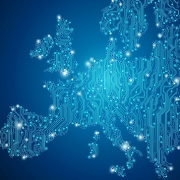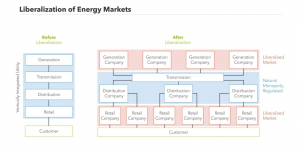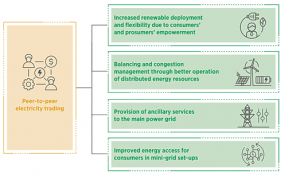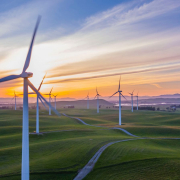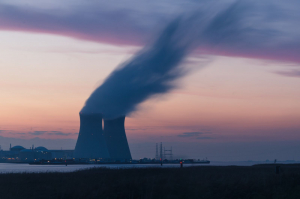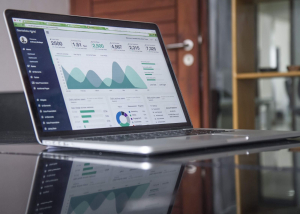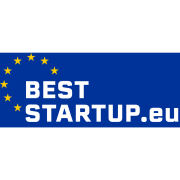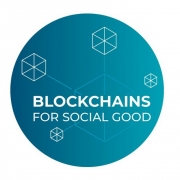Our civilisation is becoming ever more hungry for energy – yet at the same time, the planet on which we live is balancing climate systems that are ever more fragile and delicate.
It’s a challenging time for all of us, as we balance personal and professional lives that simply cannot slow down in the face of the pressures placed upon us. Despite this, our precious planet remains an ongoing casualty of our need to succeed – and many of us are feeling growing concern, as the unpredictable 2020s go on, that we have long passed the point of no return for climate change.
The energy community worldwide is standing against obstacles unlike anything ever seen before – from utility companies and electricity providers, to raw resource procurement businesses – as well as households and companies doing their best to keep their power consumption down and go greener with smart-grid solutions.
How best to thrive, let alone survive, with such tremendous pressures bearing down on us all? The answer – as with so much of what our future holds – rests in blockchain technology.
The blockchain’s embrace of greener energy
Taking a look at the headlines often means painting blockchain technology in a bad light when it comes to energy use. These concerts have some merit – after all, Bitcoin mining alone uses a great deal of energy – yet these concerns often fall short of the environmental breakthroughs being made in the cryptocurrency space, but also the difference at large between crypto assets and blockchain technologies.
In other words, using the blockchain within the energy community ought only to raise eyebrows of excitement – not of concern. Blockchain technology is independent of cryptocurrencies – it simply is the means by which they function. Furthermore, innovations such as staking and similar have removed both crypto and blockchain technologies from their previous energy hungry ways to great effect.
In fact, both Prosume and Mangrovia believe that the future of energy is to be intertwined even more intrinsically with blockchain technologies and philosophies alike. That means not only a more reliable way for technology to autonomously and trustlessly perpetuate the energy community needs of tomorrow – but also ways for smart-grids and related technologies to feel the empowerment of decentralisation and other solutions, as inspired by the libertarian thinking behind blockchain technology as a whole.
Can the blockchain fight climate change?
When considering how smart-grid solutions and blockchain energy technologies interact, it’s important to remember that we are not suggesting that blockchain technologies alone are the answer to solving climate change.
That’s because this is a vast and planetwide problem, so no one answer is the only answer – the energy community and our society as a whole needs to come together.
The complications that come with solving the global climate crisis are often made more difficult to solve due to how complicated the energy industry is overall. When you step into your home office, flip the light switch, adjust the heating and turn on the computer, you’re understandably likely not to think anything of it.
Yet behind the scenes, an enormous amount of resources, data and trading of energy is in play just to make these conveniences happen. It’s this complex interplay of trading, promises, deals and safe energy provision that the blockchain is able to solve.
Consider also that the world is at a delicate inflection point, where green energy production and distribution is finally attainable, yet the demands of the power sector overall are so immense that most advanced economies are forced to rely on fossil fuels in the immediate term or face unacceptable disruptions to the very foundations of how civilisation functions.
As you can imagine, with all of us having experienced our society grinding to a halt overnight once before since this decade began, few of us are keen to see it happen again – least of all with something so fundamental to our health, wealth and happiness as energy.
Naturally, the goal of society is to eventually – or preferably, immediately – transition away from dangerous and pollutive sources of energy to instead function solely by clean and renewable energy sources.
As many of us have seen, these incentives are often stifled by the slow moving wheels of bureaucracy, not to mention the squabbles of politicians using the climate as leverage over their opponents instead of seeing it as a dire problem that needs to be solved.
With blockchain technology and the smart-grids that it can help to empower, the energy community can take a decisive and constructive step away from politicking and sluggish climate responses.
Instead, with blockchain technology in the driving seat, energy providers, their customers and key stakeholders across the entire value chain are able to interact not only with greater transparency, but also greater protection and greater privacy.
Because the blockchain does all the heavy lifting, people are free to not only more safely source and pay for their energy, but also continue promoting, creating and cultivating sources of green energy.
The blockchain can intelligently direct customers towards those greener energy sources too, creating incentives for producers and suppliers among the energy community to go greener faster – it’s where all the customers are, after all!
The blockchain streamlines energy payments
Much has been said of the rising price of energy, and with that comes the complications of customers settling their rising bills – not to mention the rise of financial crime and online fraud surrounding these very concerns.
Even in cases in which cryptocurrency itself isn’t used, the fully traceable, fundamentally, immutable and entirely private nature of the blockchain makes it a fantastic payment processing solution for the energy community.
Remember, smart-grid technologies thrive on not only a more equitable exchange framework between providers and customers, but also ways in which peer to peer energy solutions or customers selling their own generated energy back to the grid can thrive.
The blockchain streamlines all of this, with every transaction locked by smart contracts that activate and record any and all exchanges of both power and money that take place. With this more flexible approach, energy can be bought, sold and traded easily among an energy community the size of a nation, a smart-grid city, or even within a neighbourhood.
How decentralisation can empower the energy industry
Information silos hurt any business, and the energy community of utilities and providers active worldwide are no exception. Because energy is a business first and foremost, the drive to outperform competitors and protect corporate secrets can create an inadvertent culture of centralisation within the energy sector that hurts not only users and communities – but also the fight against climate change itself.
Decentralisation is often romanticised as a solution in which all authority and control is prised away from the people at the top and reclaimed by the members of the community themselves. In reality, the truth is a touch more nuanced.
Decentralisation is more a question of making sure that there is a fairer balance of influence between the people in authority – classically utility and distribution companies in the classic energy community – versus the end users, or customers and householders in the energy industry’s case.
When the energy community is more decentralised, everyone benefits. This is because energy providers themselves are subject to the same rules of blockchain smart contracts as end users are, and those rules are mechanical and faultless – no room for corruption or for people creating trouble for their own financial gain.
Similarly, thanks to decentralisation, energy users are no longer at the mercy of their utility providers alone. For example, through the blockchain decentralisation of how and where a customer sources their energy, a householder is more free to shop around.
Don’t like the price your provider is inflating while the industry goes through turmoil? Turn to a peer to peer provider or simply shop around within the blockchain energy ecosystem instead.
Using your own machinery to generate more energy than your home or business needs? With blockchain decentralisation, there is far less bureaucracy to jump through in making money off that excess power – the blockchain is handling the finer details, and can likewise use smart-grid thinking to automatically connect that energy with the people who need it most.
So far, so free market, right? To an extent, yes – but money is not the ultimate goal here, saving the planet is. To that end, the most important aspect of why decentralisation works for a blockchain energy community is that smart-grids empowered in this way can more efficiently distribute the energy being generated.
After all, a huge part of fighting climate change comes down to simply using energy more intelligently, from the humblest households to the most magnanimous of multinationals.
Each of us has a role to play in using the energy we consume for work and play intelligently – and with the precise guidance of the blockchain, working hand in hand with decentralisation, smart-grid solutions can far more effectively help users make intelligent choices in how their energy is used.
Blockchain smart-grid technology helps shape smarter energy use
Energy efficiency is a huge part of fighting climate change. Even entirely reconfiguring the means by which we as a civilisation gain and utilise our power means next to nothing if we are still wasting much of the power being produced.
A true fight against climate change is just as much a case of effectively using the Earth’s resources as it is effectively using the energy moving through the wires and pipes of our communities.
Best practices are widely known in the world of today, of course, yet there is also a rising level of scepticism in play that is damaging the entire climate change resistance movement. Sadly, that’s because many companies are simply content to greenwash their roles in climate change, and consumers are aware – and discontent.
If greenwashing has such a damaging effect on customers’ goals in fighting climate change, how are people who are trying to do the right thing supposed to know what to think? Placing the burden of responsibility on end users in the energy community isn’t just unreasonable, it’s unrealistic – people don’t have access to the best information in order to make the best energy choices, yet they also don’t always trust the people telling them which such choices to make either.
Here, blockchain smart-grid energy technology can help. With usage data logged immutably on the blockchain, more intelligent advice on how best to use the energy entering the home or office can be delivered by the platform itself.
Similarly, with so much data moving throughout the blockchain, smart-grid efficiency becomes that much more enhanced. Just as end users are able to make more intelligent decisions as to what devices to use at what time to minimise their carbon impact, so to speak, so too can energy providers more intelligently balance grid demands and efficiency drives to make the most of the resources being moved throughout the system.
Altogether, the end result is a far more equitable and balanced one than many of the power systems active today. A more engaged energy community, each in control of their own domains via the blockchain, can enjoy a system that is more robust and resilient against unprecedented demand – an especially big concern in today’s times.
With all of this combined, an energy community forms that’s emboldened by purpose, unburdened by bureaucracy and driven by the most important goal of all – saving our planet from the ever encroaching threat of climate change.
Putting the blockchain to work for the betterment of humankind
Blockchain technology has landed headline after headline over the last decade – and it’s fair to say that some of these have been more favourable than others.
As with any new technology, the blockchain is a powerful invention that can promote all kinds of endeavours in all kinds of directions – and at Prosume, we believe that putting it to work fighting climate change is one of the most important goals of all.
From smart-grid solutions to P2P trading and effective resource management, there’s no limit to what the blockchain can unlock in energy efficiency and greener power.



